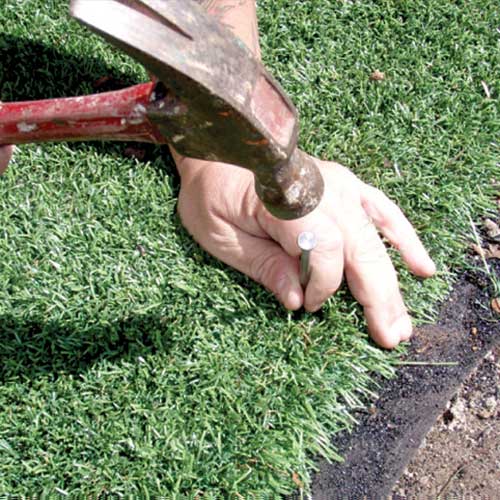Top Arizona Turf Suppliers Offering a Lifelike Lawn Option
Look Into the Environmental Perks of Opting for Artificial Lawn Solutions
The adoption of synthetic grass options provides an engaging opportunity to deal with pressing ecological challenges. By considerably reducing water use and lessening the application of damaging chemicals, these choices not just advertise lasting landscape design but likewise protect neighborhood ecological communities.
Water Preservation Advantages
One of the most significant benefits of synthetic turf is its ability to conserve water. In contrast, fabricated turf does not require watering, significantly minimizing the general need for water resources.
By eliminating the need for routine watering, synthetic grass adds to lasting landscape methods and aids reduce the environmental effect of too much water intake. The preservation of water expands to the decrease of overflow, which can lead to dirt erosion and waterway pollution.
In addition, the installment of synthetic grass permits house owners and municipalities to allocate water sources much more successfully, concentrating on essential uses such as alcohol consumption water and agriculture. The shift towards synthetic grass not just advertises responsible water use however also straightens with broader environmental goals focused on protecting natural deposits.
As neighborhoods progressively prioritize sustainability, the water preservation advantages of synthetic grass offer a compelling instance for its fostering in industrial and residential landscaping tasks.
Lowered Chemical Use
The change to synthetic grass dramatically reduces the reliance on chemical treatments typically made use of in all-natural turf upkeep. Conventional lawn monitoring normally involves the application of pesticides, herbicides, and plant foods to promote development and control insects. These chemicals can position dangers to human health, regional wildlife, and the atmosphere, adding to soil and water contamination.
In contrast, man-made grass eliminates the need for these hazardous substances. By decreasing the launch of synthetic substances right into the environment, synthetic grass advertises healthier dirt and water systems.
In addition, the absence of chemical drainage related to fabricated turf installations aids shield local waterways from pollution, supporting aquatic life and keeping biodiversity. Turf installation phoenix az. As areas increasingly focus on lasting practices, selecting man-made grass provides a feasible service that straightens with ecological preservation objectives. With this shift, home owners can delight in rich green areas without endangering ecological health, paving the means for an extra sustainable future
Reduced Carbon Impact

Additionally, the installation of artificial lawn can cause substantial water preservation. Natural yards require significant amounts of water for watering, which not just includes in the carbon footprint connected with water extraction and therapy however also pressures local water resources. In contrast, fabricated lawn needs very little upkeep, needing no watering, consequently substantially decreasing water use and its associated energy expenses.
Furthermore, the long life of synthetic grass adds to its decreased carbon effect. With a life-span of up to 15 years or even more, the need for frequent substitutes is diminished, causing much less waste and reduced power intake in production and getting rid of traditional turf options. Generally, synthetic grass offers a lasting alternative for environmentally conscious landscaping.
Habitat Preservation
Habitat conservation is an important consideration in the discussion over landscaping choices, specifically when contrasting synthetic grass to all-natural grass. Natural yard lawns typically require extensive upkeep, including using chemicals, fertilizers, and herbicides, which can adversely influence local communities. These chemicals can leach right into the soil and waterways, damaging indigenous plants and fauna and disrupting neighborhood environments.
Synthetic grass eliminates the need for dangerous chemicals, consequently shielding neighboring wildlife and maintaining the honesty of surrounding environments. The installation of man-made turf can lead to the conversion of previous read this post here grass locations into even more biodiverse landscapes, such as pollinator gardens or native plant locations, which can sustain regional wildlife.
Ultimately, the change to artificial turf not only saves water and lowers upkeep initiatives however likewise fosters a more harmonious relationship in between human activities and the natural surroundings, advertising habitat conservation at go to website the same time.
Long-Term Sustainability
Lasting sustainability is an essential consider assessing the benefits of fabricated turf over traditional yard lawns. One of the most significant benefits of man-made turf is its toughness; it can last as much as 15-20 years with very little upkeep, whereas natural lawn calls for frequent reseeding and substitute. This longevity lowers the requirement for constant sources, such as water, fertilizers, and pesticides, which are vital for maintaining a healthy yard lawn.
In addition, fabricated turf adds to a reduction in carbon exhausts connected with yard treatment tools. Typical lawns usually call for gas-powered lawn mowers, trimmers, and blowers, every one of which add to air contamination. Phoenix turf companies. On the other hand, synthetic grass removes the need for such tools, promoting a cleaner atmosphere
Additionally, the manufacturing of fabricated lawn significantly uses recycled products, enhancing its sustainability account. As makers embrace environment-friendly practices, the environmental footprint of synthetic grass proceeds to diminish.

Conclusion
The fostering of artificial lawn solutions provides significant environmental advantages, consisting of considerable water preservation, lowered dependence on harmful chemicals, and a lower carbon footprint. Artificial grass aids in preserving natural habitats by minimizing land disruption and advertising long-lasting sustainability via the use of long lasting materials. Collectively, these factors highlight the possibility of fabricated turf to contribute positively to environmental health and wellness and offer a practical alternative to traditional landscape design practices in a progressively resource-conscious globe.
In comparison, artificial grass does not need watering, dramatically decreasing the overall need for water sources. By minimizing the launch of artificial compounds into the community, artificial turf advertises healthier dirt and water systems.
Moreover, the setup of synthetic lawn can result in substantial water conservation. In comparison, fabricated turf needs minimal maintenance, needing no watering, consequently dramatically decreasing water usage and its connected energy expenses.
